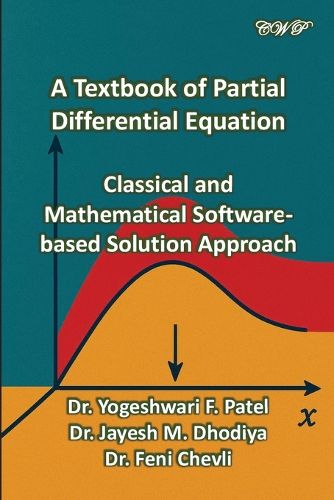Readings Newsletter
Become a Readings Member to make your shopping experience even easier.
Sign in or sign up for free!
You’re not far away from qualifying for FREE standard shipping within Australia
You’ve qualified for FREE standard shipping within Australia
The cart is loading…






Partial differential equations provide a generic description of the majority of physical events, whether they are related to heat flow, fluid dynamics, electricity, magnetism, mechanics, or optics. Such equations are, in fact, essential to mathematical physics. Even if these equations can be simplified to become ordinary differential equations, the full description of physical systems can be found in the general field of partial differential equations. This extremely helpful literature demonstrates to the reader how to create a mathematical model of the physical problem, how to generate a partial differential equation from it, and how to solve the equation (along with initial and boundary conditions).
This succinct guide is devoted to assisting engineering students in solving problems in their profession that include partial differential equations and only requires a basic understanding of ordinary differential equations. Questions of existence, uniqueness, and convergence are not emphasised; instead, the treatment concentrates solely on the useful solution of partial differential equations. The more prevalent partial differential equations related to phenomena, including vibration, heat transport, electricity, and elasticity, are derived.
For more details, please visit https: //centralwestpublishing.com
$9.00 standard shipping within Australia
FREE standard shipping within Australia for orders over $100.00
Express & International shipping calculated at checkout
Partial differential equations provide a generic description of the majority of physical events, whether they are related to heat flow, fluid dynamics, electricity, magnetism, mechanics, or optics. Such equations are, in fact, essential to mathematical physics. Even if these equations can be simplified to become ordinary differential equations, the full description of physical systems can be found in the general field of partial differential equations. This extremely helpful literature demonstrates to the reader how to create a mathematical model of the physical problem, how to generate a partial differential equation from it, and how to solve the equation (along with initial and boundary conditions).
This succinct guide is devoted to assisting engineering students in solving problems in their profession that include partial differential equations and only requires a basic understanding of ordinary differential equations. Questions of existence, uniqueness, and convergence are not emphasised; instead, the treatment concentrates solely on the useful solution of partial differential equations. The more prevalent partial differential equations related to phenomena, including vibration, heat transport, electricity, and elasticity, are derived.
For more details, please visit https: //centralwestpublishing.com